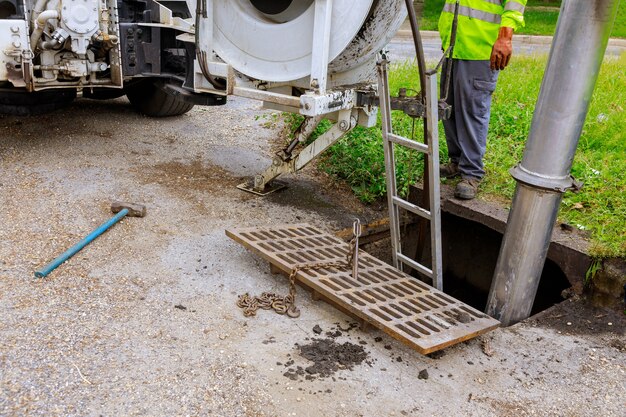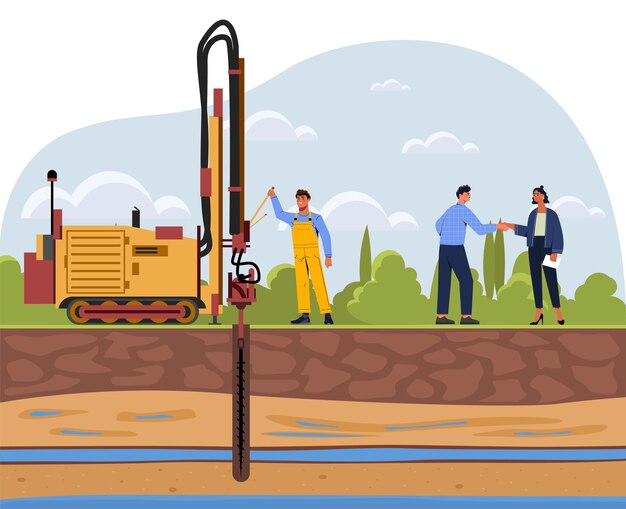The need for efficient and minimally invasive methods of installing underground utilities has never been more critical. One such method that has gained popularity in recent years is the trenchless torpedo method. This article will explore the trenchless torpedo method in detail, including its applications, advantages, and how it works, all while providing a visual representation through a ‘trenchless torpedo method gif’ to enhance understanding.
What is the Trenchless Torpedo Method?
The trenchless torpedo method is a technique used for the installation of underground utilities, such as water, gas, and telecommunications lines, without the need for extensive excavation. This method is particularly useful in urban areas where digging trenches can disrupt traffic, damage existing infrastructure, and create significant environmental concerns.
The process involves using a specialized piece of equipment known as a torpedo or directional drill. This equipment is designed to bore a hole underground, allowing for the installation of pipes or cables with minimal surface disruption. The trenchless torpedo method is often favored for its efficiency, cost-effectiveness, and reduced environmental impact.
How Does the Trenchless Torpedo Method Work?
The trenchless torpedo method operates through a series of well-coordinated steps:
-
Site Assessment: Before any work begins, a thorough assessment of the site is conducted. This includes identifying existing underground utilities, soil conditions, and any potential obstacles that may affect the drilling process.
-
Equipment Setup: Once the site is assessed, the necessary equipment is set up. This typically includes the torpedo drill, which is equipped with a cutting head, and a tracking system to monitor the drill’s progress underground.
-
Drilling: The torpedo drill is then activated, and the cutting head begins to bore through the soil. The drill can be steered to navigate around obstacles and follow a predetermined path. This is where the term “directional drilling” comes into play.
-
Pipe Installation: As the drill progresses, a pipe or cable is pulled through the newly created borehole. This can be done simultaneously with the drilling or as a separate step, depending on the specific requirements of the project.
-
Completion and Restoration: Once the installation is complete, the equipment is removed, and the site is restored to its original condition. This often involves minimal surface disruption, making the trenchless torpedo method an attractive option for urban projects.
Advantages of the Trenchless Torpedo Method
The trenchless torpedo method offers several advantages over traditional excavation methods:
1. Minimal Surface Disruption
One of the most significant benefits of the trenchless torpedo method is the minimal disruption it causes to the surface. Traditional excavation methods often require large trenches to be dug, which can lead to traffic disruptions, damage to landscaping, and other inconveniences. In contrast, the trenchless method allows for the installation of utilities with little to no visible impact on the surface.
2. Cost-Effectiveness
While the initial setup costs for trenchless technology may be higher than traditional methods, the overall cost can be lower due to reduced labor, less need for restoration, and fewer disruptions. Additionally, the speed of installation can lead to significant savings in project timelines.

3. Environmental Benefits
The trenchless torpedo method is more environmentally friendly than traditional excavation methods. By minimizing surface disruption, it reduces the risk of soil erosion, water runoff, and damage to existing vegetation. This is particularly important in sensitive areas where environmental protection is a priority.
4. Increased Safety
Excavation work can pose safety risks trenchless torpedo method gif to workers and the public. The trenchless torpedo method reduces the need for large excavation sites, lowering the risk of accidents and injuries. Additionally, the method allows for the installation of utilities without the need for workers to be in potentially hazardous trenches.
5. Versatility
The trenchless torpedo method can be used for a variety of applications, including the installation of water, sewer, gas, and telecommunications lines. This versatility makes it a valuable tool for contractors and engineers working on diverse projects.
Applications of the Trenchless Torpedo Method
The trenchless torpedo method is used in various applications across different industries. Some common uses include:
1. Water and Sewer Line Installation
Municipalities often use the trenchless torpedo method to install or replace water and sewer lines. This is particularly useful in urban areas where existing infrastructure may be complex and difficult to navigate.
2. Gas Line Installation
Natural gas companies frequently employ the trenchless torpedo method to install gas lines. The method allows for the safe and efficient installation of pipelines without disrupting the surrounding area.
3. Telecommunications
With the increasing demand for high-speed internet and telecommunications services, the trenchless torpedo method is often used to install fiber optic cables. This method allows for the rapid deployment of services while minimizing disruption to businesses and residents.
4. Electrical Conduits
The trenchless torpedo method is also utilized for the installation of electrical conduits. This is essential for powering new developments or upgrading existing infrastructure without the need for extensive digging.
5. Drainage Systems
In addition to utility installation, the trenchless torpedo method can be applied to create drainage systems. This is particularly beneficial in areas prone to flooding, as it allows for the efficient installation of drainage pipes with minimal surface impact.
Challenges and Considerations
While the trenchless torpedo method offers numerous advantages, it is not without its challenges. Some considerations include:
1. Soil Conditions
The effectiveness of the trenchless torpedo method can be influenced by soil conditions. Hard or rocky soils may pose difficulties for the drilling process, potentially leading to increased costs and extended project timelines.
2. Existing Utilities
Navigating around existing underground utilities can be a challenge. A thorough site assessment is crucial to identify potential conflicts and ensure the safe installation of new lines.
3. Equipment Limitations
The success of the trenchless torpedo method relies heavily on the equipment used. Specialized machinery is required, which may not be readily available in all regions. This can lead to increased costs and project delays if the necessary equipment must be transported from another location.
4. Regulatory Compliance
Contractors must ensure compliance with local regulations and permits when using the trenchless torpedo method. This may involve additional paperwork and coordination with local authorities, which can add to project timelines.
Conclusion
The trenchless torpedo method represents a significant advancement in the field of underground utility installation. Its ability to minimize surface disruption, reduce costs, and provide environmental benefits makes it an attractive option for contractors and municipalities alike. As urban areas continue to grow and the demand for efficient utility installation increases, the trenchless torpedo method is likely to play an essential role in shaping the future of infrastructure development.
Incorporating visual aids, such as a ‘trenchless torpedo method gif’, can further enhance understanding and appreciation of this innovative technique. By showcasing the process in action, stakeholders can better grasp the efficiency and effectiveness of the trenchless torpedo method, ultimately leading to more informed decisions in utility installation projects.
As technology continues to evolve, the trenchless torpedo method may see further advancements, making it an even more valuable tool in the construction and civil engineering industries. The future of underground utility installation looks promising, with the trenchless torpedo method at the forefront of this transformation.


